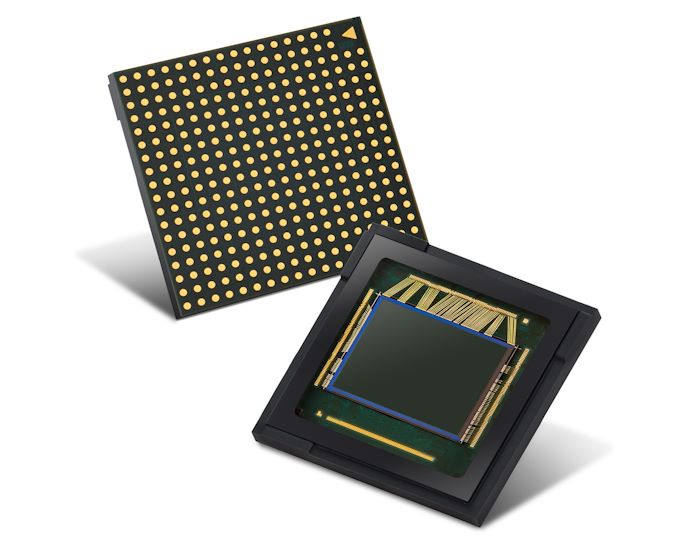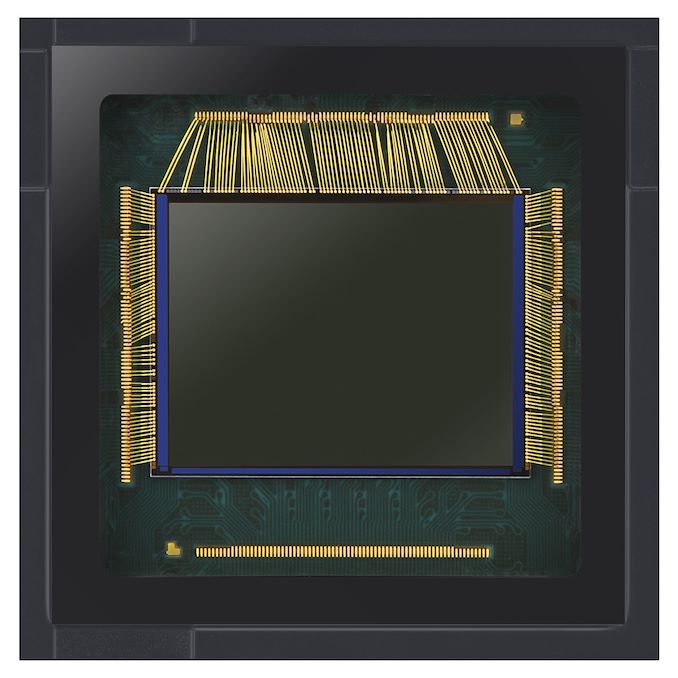Samsung Announces New 50MP Dual-Pixel and Quad-Bayer ISOCELL Sensor
by Andrei Frumusanu on May 19, 2020 6:30 AM EST- Posted in
- Mobile
- Smartphones
- Sensor
- Samsung LSI
- Camera Sensors
- Samsung GN1

Samsung today has announced a brand-new flagship sensor in the form of the ISOCELL GN1. The new sensor is seemingly a follow-up to the 108MP ISOCELL HMX and HM1 sensors that we’ve seen employed by Xiaomi devices and the Galaxy S20 Ultra.
The big changes in the new GN1 is that it uses are different optical formula to the existing larger megapixel sensors. It’s only a bit less than half the resolution at a maximum of 50 megapixels, however the per-pixel pitch grows from 0.8µm to 1.2µm.
It seems that Samsung’s main rationale to grow to a larger pixel pitch wasn’t just the per-pixel increased light gathering ability, but rather the enablement to re-introduce full sensor dual-pixel phase-detection. The existing 108MP sensors that have been out in the market have been using 2x1 distributed on-chip lens phase detection autofocus pixels on the sensor, with the autofocus performance not been nearly as performant and a dual-pixel PD solution. In theory, the GN1 using dual-pixel PD pixels means that it uses pairs of 0.6µm x 1.2µm photo sites.
The GN1 is also the first sensor to pair the dual-pixel technology with a quad-bayer colour filter array, which Samsung calls Tetracell. In effect, the 50MP sensor will natively bin 2x2 pixels to produce a 12.5MP image with effective pixel pitches of 2.4µm. Interestingly, Samsung also talks about providing software algorithms to be able to produce 100MP images by using information from each individual photodiode – which all sounds like pixel-shift super resolution techniques.
The size of the sensor remains at a large 1/1.33” – in essence it’s most comparable to Huawei’s current 50MP sensor that is found in the P40 series phones – with the addition of Dual Pixel PD.
The sensor still supports 8K30 video recording, but we hope it’s able to achieve this with a smaller image crop compared to the current HM1 implementation in the S20 Ultra.
These new generation sensors are extremely challenging for vendors to properly use – besides the increased computational workload to actually use the full resolutions (the reduction from 108MP to 50MP will help there), there’s also the challenge of providing adequate optics that can take advantage of the resolution. It seems the GN1 here is a bit more reasonable in its demands, other than its sheer large size.
Related Reading:
Source: Samsung Newsroom











68 Comments
View All Comments
wr3zzz - Tuesday, May 19, 2020 - link
Where is the MP ceiling for phones? At some point you'll need a bigger lens that just won't do in a phone.StevoLincolnite - Tuesday, May 19, 2020 - link
Or more lenses.Valantar - Tuesday, May 19, 2020 - link
More lenses won't help past a certain point - miniaturization of lens elements brings with it a series of issues (chromatic aberration, coma, various distortions, etc., not to mention that the smaller the lens, the larger any production error will become in the final image). I'm already shocked that they fit as large a sensor+lens combo in the S20 Ultra as they did even considering its huge hump - I doubt there's anywhere to go without making some kind of late-2000s camera bump making the phone massively thick at one point. And still there's both practical and image related issues to increasing pixel counts (not that this does that though).yeeeeman - Tuesday, May 19, 2020 - link
That is what everyone believe 10, 20, 30 years ago and look where we are today. There will always be rooms for improvement and technical challenges are just an unknown, not an impossibility.BedfordTim - Tuesday, May 19, 2020 - link
Nokia tried it recently and failed dismally. They used 5 tiny sensors without OIS, and it all fell apart in low light. If the images were too noisy the software couldn't combine them and gave up leaving a hopeless mess. There were other issues such as the picture element of motion photos being out of focus but they were entirely fixable if Nokia had bothered.It may be better to have a set of small field of view images and stitch them as it gets around the low light issue, but the assembly would be interesting.
melgross - Tuesday, May 19, 2020 - link
No, there are theoretical limits to optical resolution. As we reach them, and we’re pretty much there with the tiny sensors in smartphones, we won’t be able to go any higher. We’ve seen that with microscopes for well over 100 years. As you approach the wavelength of light, you simply can’t resolve any more. Then its called “empty resolution”.BedfordTim - Wednesday, May 20, 2020 - link
You can reach the limits of resolution but you don't have to put all of the sensing area in one camera. Think about how a panorama photo is generated by stitching lots of smaller photos together.Santoval - Tuesday, May 19, 2020 - link
Merely increasing resolution is nowhere close to an "improvement". These sensors are super noisy due to their very small pixel pitch and thus require quite aggressive noise reduction (either conventional or, as is more often done nowadays, via neural networks). There are other drawbacks as well as resolution increases. Increasing resolution merely increases the *size* of the image (*not* its quality) with everything else being equal or -usually- worse.There is no point to a 50 MP or a ... 108 MP (!) image because no monitor or other device exists with such a resolution so that someone can view that image. Since there is no way to view it the sole purpose of such images is for bragging rights and they only just waste storage. The only value a 108 MP image might have is for zooming in to see minute details of images shot from afar (assuming its memory footprint does not cause a buffer overflow, that is). In other words for fields like astronomy, photos taken by satellites of certain spots on Earth, bird & nature watching etc etc How many people do you thing bought a phone with a 108 MP sensor for such purposes?
surt - Tuesday, May 19, 2020 - link
<head explodes> You've never heard of zooming in? Maybe I take a 50MP picture of my kid's graduation group, and then we take a look at each kid's face as we walk down memory lane?Which is not to mention a future in which displays evolve from 8k to 32k, and become capable of displaying much higher resolution images. Do you only ever look at your photos the same day? Why bother to take them?
Valantar - Wednesday, May 20, 2020 - link
Have you ever zoomed into a smartphone photo of this type of resolution? The quality to do so simply isn't there - everything looks like blotchy garbage. There are definitely uses for resolutions above 1-2mp even if >99% of photos shot on a smartphone are never viewed elsewhere, but above 12? Nah. A good quality 12mp photo can be printed in A3 size or even larger (either by allowing for it not being viewed very close, or by using a high quality upscaling algorithm). Sensors this size have already hit the point of dramatically diminishing returns for quality around this point, so increasing resolution further will typically only have detrimental effects on actual image quality. There are of course ways of alleviating this, but none that are any better than leaving the pixels reasonably large. There's also the issue of file sizes and data handling, of course, with 50mp pictures making even ridiculously compressed jpegs huge and unwieldy.